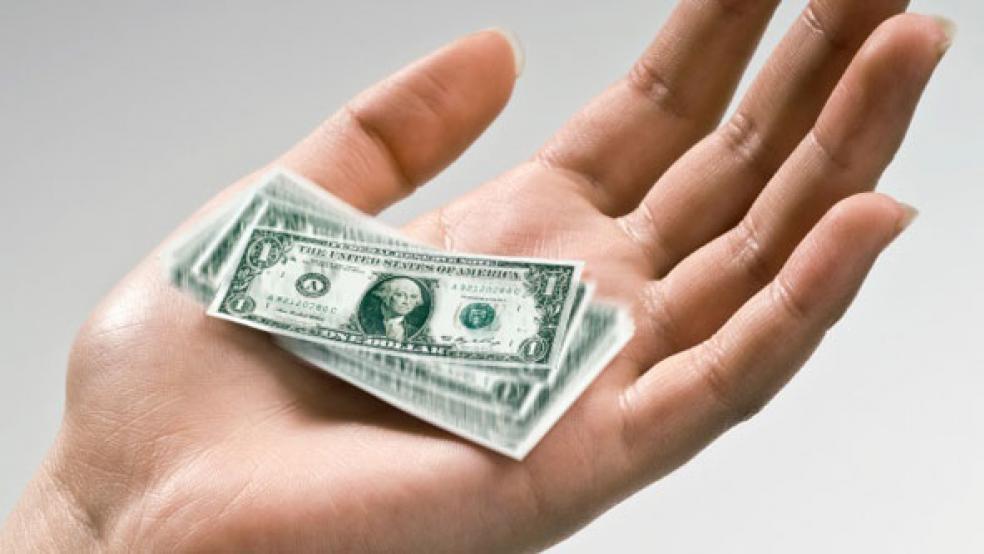Inflationary pressure on consumer prices, excluding food and energy, spiked last month, further rattling a stock market already swooning over Greek debt and a bellwether report released by the New York Fed showing a decline in New York State manufacturing. All that raised new concerns about the economic recovery, with the Dow tumbling more than 188 points (as of 3 p.m. Tuesday) in response.
Core inflation, as it is known, was up 0.3 percent in May, more than economists had expected and the highest monthly increase since July 2008. Lower energy prices kept the overall inflation rate at 0.2 percent, but even that was twice the expected 0.1 percent rate and food prices were up 0.4 percent, same as in April.
The Standard & Poor’s 500-stock index fell at the opening bell, about an hour after the report from the Labor Dept., and was down 1.78 percent at 3 p.m. The Empire State manufacturing index—released by the New York Fed—was -7.8 in June. A reading of +12 was expected. Other data showed that industrial production remained weak and home builders’ confidence fell to the lowest level since September.
Increased fears that Greece will default on its debt contributed to the market drop as protests there turned violent. Markets in Europe fell Wednesday, with France’s CAC-40 index down 1.4 percent after Moody’s Investors Service said it would review three French banks for possible downgrade because of their exposure to Greek debt.
Robert Keiser, vice president in the valuation and risk strategies group at Standard & Poor’s, says the U.S. market was largely reacting to news out of Europe Wednesday. Market declines in recent weeks also reflect the potential impact of the earthquake and tsunami in Japan on second quarter earnings, he said.
“Nothing is going right,” said Michael Feroli, chief U.S. economist for J.P. Morgan Chase in New York. “You’ve had bad growth data, bad manufacturing data, bad housing data and now bad inflation data, plus European concerns.”
Feroli said higher inflation will likely translate into less consumer spending and lower than expected economic growth in the second quarter. J.P. Morgan’s current forecast is for 2.0 percent GDP growth in the three months ending June 30, which he said has been lowered several times in recent weeks.
The Consumer Price Index rose 3.6 percent over the past 12 months, the biggest one-year gain since October 2008. The yearly gain was 1.1 percent as recently as November.
Cars and clothing drove the CPI in May. New car prices rose 1.1 per cent, in part due to supply disruptions after events in Japan. Clothing prices were up 1.2 percent, reflecting higher cotton prices and increasing labor costs overseas, where most U.S. apparel is manufactured.
Oil is now trading at just under $100 a barrel, down from a high of around $115 in early May. Gasoline prices fell two percent in May but are still up 36 percent compared with a year ago. Food prices rose 3.5 percent in the past year.
The Federal Reserve typically looks at inflation excluding food and energy when it reviews its interest-rate policy and economic outlook. Feroli said the latest inflation data is likely to “keep the Fed a little more cautious” about measures to lower interest rates, but he doesn’t expect an increase in rates any time soon. He said slower economic growth is likely to reduce the likelihood of higher consumer prices later this year, keeping inflation under control.
The inflation data is the latest in a series of disappointing reports about the economy, leading some to worry about a double-dip recession. Employers added only 54,000 new jobs in May, the slowest pace in eight months, and the unemployment rate unexpectedly rose to 9.1 percent. The latest Standard & Poor’s/Case Shiller index showed that home prices fell to their lowest level since 2002 in the first quarter, with no relief in sight. Earlier this month, the Institute for Supply Management reported that manufacturing slowed during May.
Despite the wave of disappointing news, business executives remain relatively optimistic. The Business Roundtable’s second-quarter CEO Economic Outlook Survey showed that 87 per cent of chief executives expect higher sales in the next six months and more than half plan to increase capital spending and U.S. hiring. But they lowered their outlook for GDP growth this year to 2.8 percent from 2.9 percent.
Related Links:
Inflation Picks Up Speed (CNNMoney)
Fed Boxed In as U.S. Slouches Toward Stagflation (MarketWatch)



